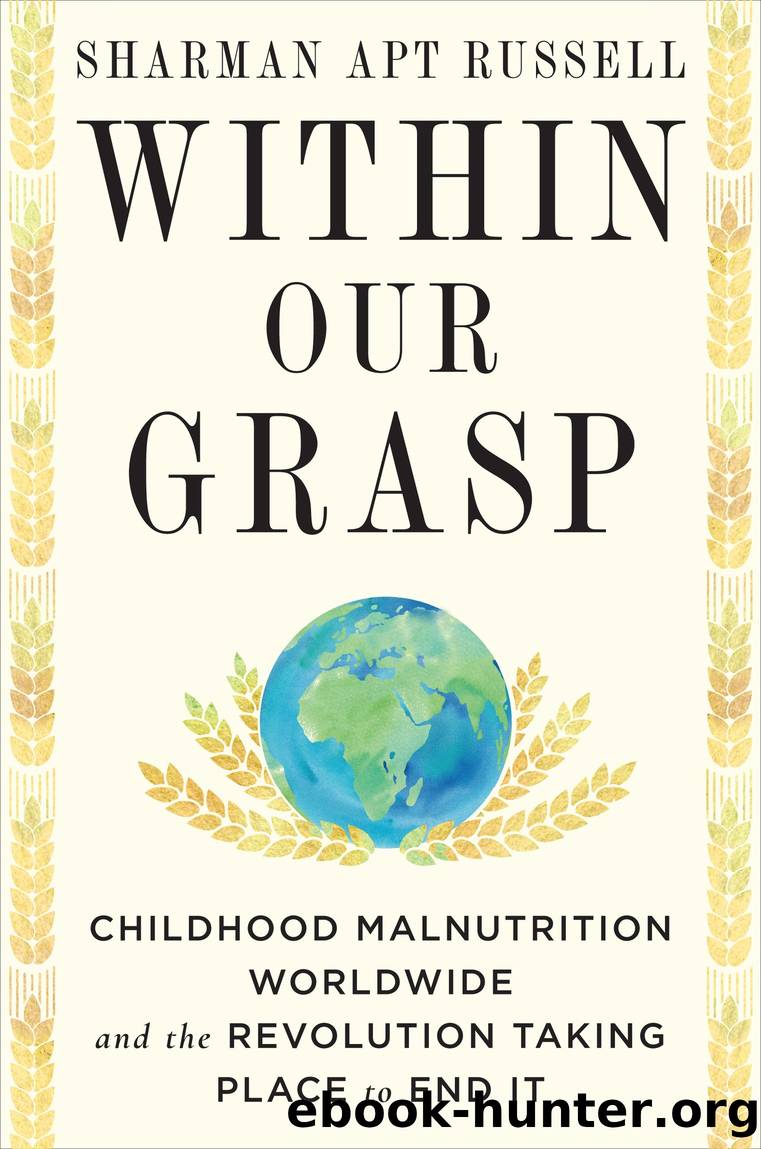Within Our Grasp by Sharman Apt Russell

Author:Sharman Apt Russell [Russell, Sharman Apt]
Language: eng
Format: epub
Publisher: Knopf Doubleday Publishing Group
Published: 2021-04-06T00:00:00+00:00
* * *
â
In 2006, the Bill & Melinda Gates Foundation and the Rockefeller Foundation began funding the continent-wide initiative Alliance for a Green Revolution in Africa (AGRA), with the vision of an agricultural revolution that is African led and focuses on the African smallholder farmer. AGRAâs mission is to change farming âfrom a solitary struggle to survive to farming as a business that thrives.â
Maria Andrade, the plant breeder from CIP who developed the provitamin Aâenriched orange-fleshed sweet potato, is a former AGRA board member. She points to Malawiâs vulnerability to drought and says that farmers growing crops like the orange-fleshed sweet potato and chickpeas will fare better than those planting conventional maize. Andrade believes that farmers want to diversify their crops but are held back by lack of support and historical prejudice. âWhen crops like maize started to dominate,â she wrote in 2016, âgovernments and the private sector accelerated that take-over by providing subsidies, research and other support. Meanwhile, other potentially useful crops like cassava and sorghum were neglected, sometimes acquiring derogatory labels like âpoor manâs cropâ or âcrop for marginal lands.â It doesnât have to be this way.â
Some people worryâmany of them the same people who worry about GMOsâthat the Green Revolution of the twenty-first century will look too much like the Green Revolution of the twentieth century.
In the 1960s and â70s, the Rockefeller Foundation also supported the development of new crops and improved agriculture. At that time, population was rising very fast, as was the number of people living in extreme poverty. In fact, in a world of 4 billion people, half lived in extreme poverty. Never before in human history had so many people been so hungry. The fear was an increasing explosion of famine and despair. In response, plant scientists like Norman Borlaug, who later won a Nobel Peace Prize for his work, looked for ways to grow more food. They crossbred rice and wheat varieties for short dwarf plants that spent energy on producing grain rather than on leaves and stems, with stiffer stems to hold up the extra weight. Given enough water and fertilizer, these crops produced much higher yields.
In many ways, the first Green Revolution was spectacularly successful. In the 1980s, China, India, and other Asian countries surged economically, fertility began dropping, and by the early twenty-first century the world was back to fewer than a billion peopleânot 2 billionâin extreme poverty. That percentage was now about 10 percent of the global population, not half.
More economic prosperity meant that many of us would enjoy longer, healthier lives. In 2019, the top ten causes of death worldwide were coronary heart disease, stroke, chronic respiratory disease (bronchitis, emphysema, and asthma largely related to smoking); lower-respiratory infections (pneumonia and bronchitis); lung and trachea cancers; diabetes; Alzheimerâs disease; diarrheal infections; tuberculosis; and car accidents. In short, more of us worried about our hearts and lungs giving out in middle or old age rather than dying young of an infectious disease or in childbirth. Global innovations in health care meant that most people would live to be seventy.
Download
This site does not store any files on its server. We only index and link to content provided by other sites. Please contact the content providers to delete copyright contents if any and email us, we'll remove relevant links or contents immediately.
The Concise Laws of Human Nature by Robert Greene(1219)
Bioenergetica by Alexander Lowen(1123)
After by Bruce Greyson(921)
The Child in You by Stefanie Stahl(883)
Stress-Proof Your Brain The Yogic Way: Unique Ancient Indian Techniques to End Toxic Stress, Stop Worrying and Inculcate Mental Toughness by Advait(872)
Badass Habits: Cultivate the Awareness, Boundaries, and Daily Upgrades You Need to Make Them Stick by Jen Sincero(787)
Talk of the Ton by unknow(733)
Chakras & Self-Care by Ambi Kavanagh(702)
The Power of Myth by Joseph Campbell & Bill Moyers(673)
Self-Care for Empaths by Tanya Carroll Richardson(635)
Learn To Think Using Thought Experiments by King Patrick(619)
The Mind by E. Bruce Goldstein(611)
No Bad Parts by Richard C. Schwartz(604)
Curative Magic by Rachel Patterson(582)
The Quantum Psychiatrist: From Zero to Zen Using Evidence-Based Solutions Beyond Medication and Therapy by Biswas Dona(551)
The 7 Secrets of Sound Healing Revised Edition by Jonathan Goldman(540)
The Tao of Intimacy and Ecstasy by Solala Towler(535)
Living a Life of Awareness by Don Miguel Ruiz Jr(527)
The Anxiety First Aid Kit by Rick Hanson(524)
